Dong Van is in the Northern region of Vietnam.
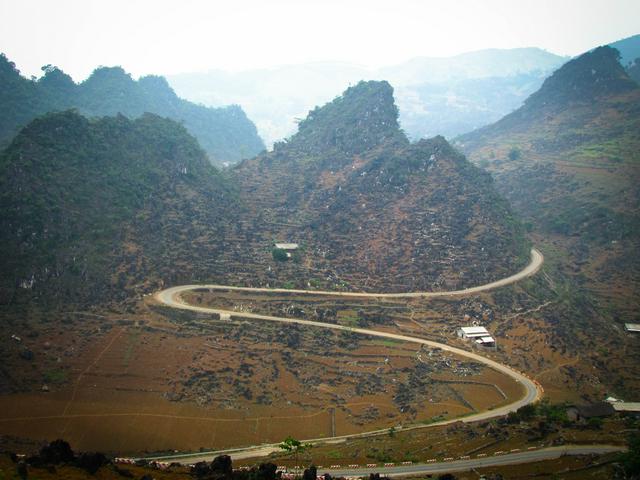
Dong Van karst plateau Geopark consists of four districts, namely, Meo Vac, Dong Van, Yen Minh, Quan Ba. Located in the North of Ha Giang province - Viet Nam. It shares border with China in the north, total area of over 2,346 km².
The karst plateau is created by at least 80 percent limestone and many fossils of ancient creatures species from 400 - 600 million years ago. Its average elevation is 1400-1600 m above sea level.
Dong Van rocky plateau is sculptural in appearance, a historical rocky page of nature. The region also contains a lot of potential values such as geological heritage, biological diversity, tourism and fossils, and also the culture of 17 ethnic groups on Dong Van karst plateau Geopark.
Dong Van Rocky Highland Geopark was became the 77th member of the Global Geopark Network in 2010. It became the first global Geopark in Vietnam, the second in Southeast Asia.
This event is a hall-mark in the process of regional and international integration. Contributing to improve Vietnam's position in the international arena. Besides, it is also an opportunity for Ha Giang province in particular and Viet Nam in general can exchange, learn, contact. Especially, promotion and introduction the human lands of Ha Giang, the value of geoheritage and culture in these area.
Scientists have made statistics of 45 geomorphic heritages, 33 tectonic heritages and numerous fossils in the sediment stone stratums on Dong Van Karst Plateau Geopark. Of which, there are 26 breed and species in the world, the first time which has been found in here and named Geographical after Ha Giang. Many Geoheritages have been ranked in National level and International level such as, the system of fault valleys in Nho Que river, Tu San canon - Ma Pi Leng pass under the type of tectonic and geomorphic heritage. Folds in calcareous karst in Ma Pi Leng, Quan Ba and many other places, etc.
Dong Van is situated in a temperate climate and divided into two seasons: Rainy (from May to October) and dry seasons (November to April). The annual mean temperature is 24-28°C, while the winter temperatures may be down to 5°C.
Spring is the most beautiful season in here, when the yellow mustard flowers and pink blossom flowers are on the foot of mountains; people also visit here in October and November for the purple buckwheat flowers.
In order to travel past Ha Giang you need to acquire a “Permit To Enter The Border Area”. You can get a permit in the Ha Giang Immigration Office or ask the receptionists in hotels.
- The Ha Giang Immigration Office, 415a, Tran Phu (Heading north, it is just before Nguyen Thai Hoc/QL34 merges with Tran Phu, across the road from the cinema/the stadium.. The opening hours are reportedly everyday (Vietnamese holidays excluded) 7:30AM-11:30AM, 1:30PM-5PM. Best to arrive in the morning or early afternoon and not leave anything too late. The process to get your permit in Ha Giang is very easy. First you walk into the immigration office and approach the window. If you are a Westerner, the officers will know straight away that you are there to purchase a permit for the North. You need to hand over your original passport. If you don’t have this with you, give them a photocopy of your picture page and visa of your passport, along with a letter stating that your passport is in Hanoi receiving a visa extension (or any other legitimate excuse as to why you don’t have it with you). If you have a motorcycle with you, they will need your registration plate number to put on your permit. They then fill out the permit card for you. Hand the money over, and they will give you back your passport and your new shiny permit. The cost for the permit is 210,000 dong, or about US$10..
- You can get the permit when you ask the receptionist in any hotels or guesthouses in Dong Van, Meo Vac. And they usually charge you 300,000 dong/permit.
The Ha Giang Immigration Office, 415a, Tran Phu (Heading north, it is just before Nguyen Thai Hoc/QL34 merges with Tran Phu, across the road from the cinema/the stadium.. The opening hours are reportedly everyday (Vietnamese holidays excluded) 7:30AM-11:30AM, 1:30PM-5PM. Best to arrive in the morning or early afternoon and not leave anything too late. The process to get your permit in Ha Giang is very easy. First you walk into the immigration office and approach the window. If you are a Westerner, the officers will know straight away that you are there to purchase a permit for the North. You need to hand over your original passport. If you don’t have this with you, give them a photocopy of your picture page and visa of your passport, along with a letter stating that your passport is in Hanoi receiving a visa extension (or any other legitimate excuse as to why you don’t have it with you). If you have a motorcycle with you, they will need your registration plate number to put on your permit. They then fill out the permit card for you. Hand the money over, and they will give you back your passport and your new shiny permit. The cost for the permit is 210,000 dong, or about US$10..
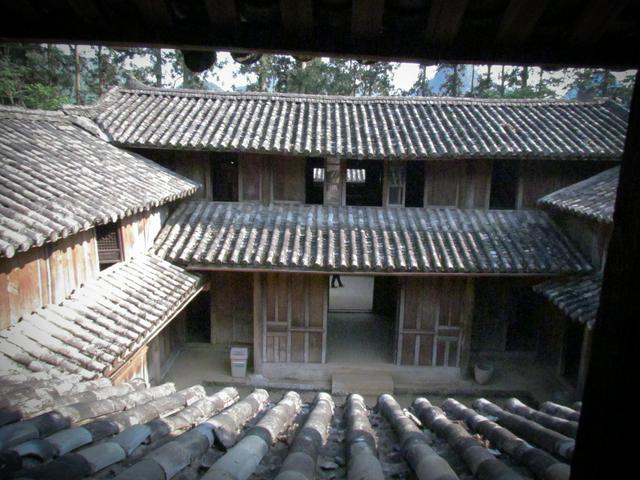
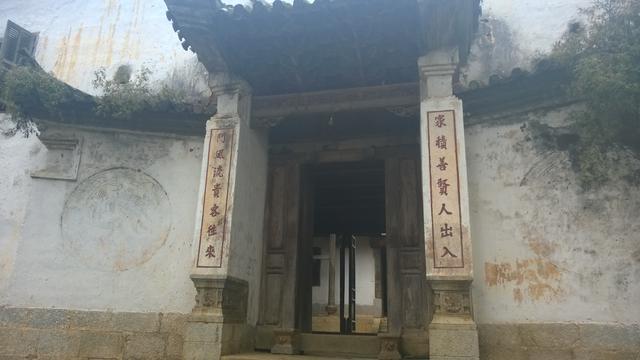
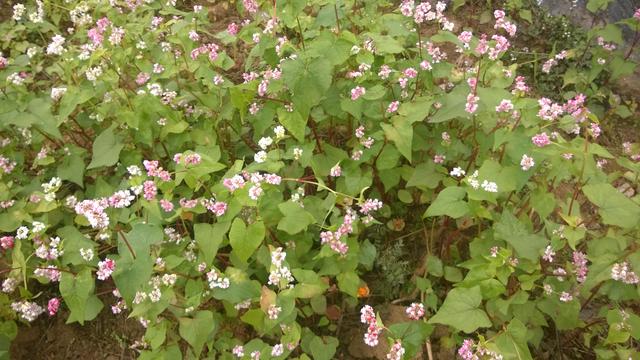
- Lung Cu Flag Tower, Lung Cu commune, Dong Van district, Ha Giang province (27km from Dong Van town up to the North. Built on the top of Dragon mountain, in the district of Dong Van and modeled on the flag tower of Hanoi. Plug in the 12.9 m flagstaff is a national flag with an area of 54m², representing for 54 ethnic groups of Vietnam. At the foot tower, there is a commemorative house, where displays production tools, costumes and cultural products of the ethnic groups in Ha Giang. From distances, Lung Cu is very spectacular with three quarters of the land covered with stone, a national flag pole erected on the top of the mountain, which is surrounded with magnificent and majestic mountain forests at 1,600 m above sea level. 20,000 dong.
- Hmong King Palace, Sa Phin commune, Dong Van district, Ha Giang province (around 23 km away from Dong Van Town. 8AM to 5PM. With an area of 1120 m², this edifice was built in the early 20th century in the form of the letter 王 (meaning "king" in English). This is not only a historical relic but also a fabulous architectural landmark of local ethnic groups. This edifice is also a destination always interested many visitors. Located at 1600 m at height compare to sea level, with area of 1120 m². Vuong dynasty area is an edifice and fortress of Vuong clan in Dong Van. Vuong King (Vuong Chinh Duc) became rich from dealing goods, especially opium. Sa Phin is the middle point of opium from the Golden Triangle region of Myanmar Yunnan China to Indochina. Duc also set up his own army unit of loyal Hmong people and equipped them with weapons. The building was built at the beginning of 20th century, imitating Chinese ancient architect of Man Thanh dynasty and being carved skillfully in Hoa Nam style. The building is used for the purpose of edifice, fortress, residence, working, visitor receiving. It is a symbol of Hmong prosperity, and the talent of the war strategy, feng shei location and traditional culture. By motorbike or car. 20,000 dong.
- Dong Van Old Town. located in the middle of valley surrounded by rocks. The quarter is formed form the early 20th century, only has a few families of the H’mong, Tay and Chinese, gradually, more and more other local residents find it. The oldest house is the house of Luong family built since 1860. The common architecture here is the two-story house and yin and yang roofs. The lifestyle and daily life of ethnic people such as: Kinh, Tay, Mong, Hoa is very impressive.
- Pho Bang Village. Peaceful and calm town, which is 30 km from Dong Van Town, Pho Bang Village is the home of Hoa and Mong ethnicities. The houses here embrace the traditional architecture. They have wooden columns and mud walls.
- Ma Pi Leng Pass, Pai Lung commune, Meo Vac district, on National Road 4C connecting Dong Van and Meo Vac districts. This is one of the most complex parts of the karst plateau typified by continuous karst pyramids, karst cones, slopes and karst walls. Thus, Ma Pi Leng is called the first-rate landscape. At a depth of 700-800 m, a length of 7 km and 70-90° steep cliffs, this is the most spectacular landscape on the karst plateau. The canyon is measured the deepest of its kind in Vietnam and perhaps in Southeast Asia. The first-rate landscape was Ma Pi Leng is classified by scientists as an international tectonics - landforms heritage - a deserving recognition for the astonishing landscape full of legendaries and fairy tales.
Lung Cu Flag Tower, Lung Cu commune, Dong Van district, Ha Giang province (27km from Dong Van town up to the North. Built on the top of Dragon mountain, in the district of Dong Van and modeled on the flag tower of Hanoi. Plug in the 12.9 m flagstaff is a national flag with an area of 54m², representing for 54 ethnic groups of Vietnam. At the foot tower, there is a commemorative house, where displays production tools, costumes and cultural products of the ethnic groups in Ha Giang. From distances, Lung Cu is very spectacular with three quarters of the land covered with stone, a national flag pole erected on the top of the mountain, which is surrounded with magnificent and majestic mountain forests at 1,600 m above sea level. 20,000 dong.
Hmong King Palace, Sa Phin commune, Dong Van district, Ha Giang province (around 23 km away from Dong Van Town. 8AM to 5PM. With an area of 1120 m², this edifice was built in the early 20th century in the form of the letter 王 (meaning "king" in English). This is not only a historical relic but also a fabulous architectural landmark of local ethnic groups. This edifice is also a destination always interested many visitors. Located at 1600 m at height compare to sea level, with area of 1120 m². Vuong dynasty area is an edifice and fortress of Vuong clan in Dong Van. Vuong King (Vuong Chinh Duc) became rich from dealing goods, especially opium. Sa Phin is the middle point of opium from the Golden Triangle region of Myanmar Yunnan China to Indochina. Duc also set up his own army unit of loyal Hmong people and equipped them with weapons. The building was built at the beginning of 20th century, imitating Chinese ancient architect of Man Thanh dynasty and being carved skillfully in Hoa Nam style. The building is used for the purpose of edifice, fortress, residence, working, visitor receiving. It is a symbol of Hmong prosperity, and the talent of the war strategy, feng shei location and traditional culture. By motorbike or car. 20,000 dong.
Dong Van Old Town. located in the middle of valley surrounded by rocks. The quarter is formed form the early 20th century, only has a few families of the H’mong, Tay and Chinese, gradually, more and more other local residents find it. The oldest house is the house of Luong family built since 1860. The common architecture here is the two-story house and yin and yang roofs. The lifestyle and daily life of ethnic people such as: Kinh, Tay, Mong, Hoa is very impressive.
Pho Bang Village. Peaceful and calm town, which is 30 km from Dong Van Town, Pho Bang Village is the home of Hoa and Mong ethnicities. The houses here embrace the traditional architecture. They have wooden columns and mud walls.
Ma Pi Leng Pass, Pai Lung commune, Meo Vac district, on National Road 4C connecting Dong Van and Meo Vac districts. This is one of the most complex parts of the karst plateau typified by continuous karst pyramids, karst cones, slopes and karst walls. Thus, Ma Pi Leng is called the first-rate landscape. At a depth of 700-800 m, a length of 7 km and 70-90° steep cliffs, this is the most spectacular landscape on the karst plateau. The canyon is measured the deepest of its kind in Vietnam and perhaps in Southeast Asia. The first-rate landscape was Ma Pi Leng is classified by scientists as an international tectonics - landforms heritage - a deserving recognition for the astonishing landscape full of legendaries and fairy tales.
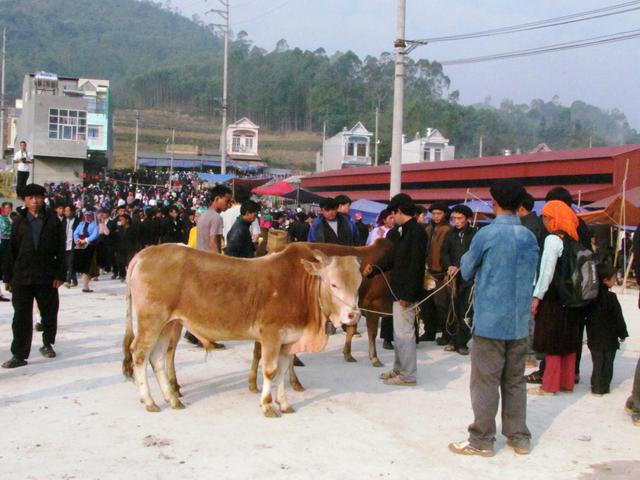
- The Dong Van market, in the centre of Dong Van Old Quarter. is held every Sunday. On sale are local products made by Mong, Han, Dao, Giay and Tay ethnic people. To reach the market on time they have to leave their homes very early in the morning or even one day earlier. In there, people in different ethnic groups can come to find their life-partners.
The Dong Van market, in the centre of Dong Van Old Quarter. is held every Sunday. On sale are local products made by Mong, Han, Dao, Giay and Tay ethnic people. To reach the market on time they have to leave their homes very early in the morning or even one day earlier. In there, people in different ethnic groups can come to find their life-partners.
It's possible to buy here mint honey, corn wine, buckwheat cake and candy, ethnic costumes.
Mint honey is a special honey, only in Dong Van karst plateau global geopark. This kind of honey has delicate taste of mint, much more light sweetness than other honey. Mint honey is said to be special pharmaceutical to strengthen health, curing respiratory illness, digestive troubles. Mint honey is special produce, only in rocky region with average height of 1,200 m over sea level. According to ancient experiences, hint honey can also cure obesity, anxiety, dry cough and laryngitis. Mint honey can be bactericide, curing burned. Especially, mint honey of high land can be used to wipe furrow, soften skin and make skin ruddy.
-KRAhC.medium.jpg)
- Thang Co — cattle intestine soup, costs 20,000 - 30,000 dong per bowl. Thang Co is commonly known as special food, tradition dish of Mong ethnic people in Ha Giang high - land region and other North Pole region. Nowadays, Thang Co is a delicious and familiar dish of high - land people. When lowland people are proud of pho, high - land people pride on Thang Co. The colder it is, the more delicious Thang Co is. Thang Co is processed from many parts of a horse, including head, legs, types of meat, intestine and other specific ingredients. Thang Co is usually eaten with men men (special corn of Mong people), baked corn cake ... According to Han - Vietnamese meaning, “thang” means soup, “co” means pan, Thang Co means a pan of soup. This is a typical dish of high-land community. Thang Co used to be only made of horse meat because of its deliciousness. However, now Thang Co can be processed by other cattle meat like buffalo, cow, goat. Therefore, its name “Thang Co” is usually followed by specific cattle such as buffalo Thang Co, cow Thang Co, goat Thang Co. Thang Co is not only tasty but also showing the community’s cleverness, gastronomy and cultural beauty.
- Men men — steamed corn flour which is made of non - glutinous corn. To cook men men, each Mong family has to steam men men from early morning for the whole day. Processing men men requires much time with steps: split, grind corn into flour and sift to remove corn skin. To cook men men, it is required 2 times of steaming. In the first steaming, corn flour absorbs water to keep the flour non - glutinous. After that, the flour is left to get cold before the second steaming. To eat men men, they use a wooden ladle to scoop it into a bowl and eat with a soup, which is usually pumpkin soup or mustard greens soup. Men men is an indispensible dish of Mong people in Northern high - land Dong Van, especially in their Tet holiday, wedding or funeral.
- Hai Hien Restaurant. Cheap and clean
Thang Co — cattle intestine soup, costs 20,000 - 30,000 dong per bowl. Thang Co is commonly known as special food, tradition dish of Mong ethnic people in Ha Giang high - land region and other North Pole region. Nowadays, Thang Co is a delicious and familiar dish of high - land people. When lowland people are proud of pho, high - land people pride on Thang Co. The colder it is, the more delicious Thang Co is. Thang Co is processed from many parts of a horse, including head, legs, types of meat, intestine and other specific ingredients. Thang Co is usually eaten with men men (special corn of Mong people), baked corn cake ... According to Han - Vietnamese meaning, “thang” means soup, “co” means pan, Thang Co means a pan of soup. This is a typical dish of high-land community. Thang Co used to be only made of horse meat because of its deliciousness. However, now Thang Co can be processed by other cattle meat like buffalo, cow, goat. Therefore, its name “Thang Co” is usually followed by specific cattle such as buffalo Thang Co, cow Thang Co, goat Thang Co. Thang Co is not only tasty but also showing the community’s cleverness, gastronomy and cultural beauty.
Men men — steamed corn flour which is made of non - glutinous corn. To cook men men, each Mong family has to steam men men from early morning for the whole day. Processing men men requires much time with steps: split, grind corn into flour and sift to remove corn skin. To cook men men, it is required 2 times of steaming. In the first steaming, corn flour absorbs water to keep the flour non - glutinous. After that, the flour is left to get cold before the second steaming. To eat men men, they use a wooden ladle to scoop it into a bowl and eat with a soup, which is usually pumpkin soup or mustard greens soup. Men men is an indispensible dish of Mong people in Northern high - land Dong Van, especially in their Tet holiday, wedding or funeral.
Hai Hien Restaurant. Cheap and clean
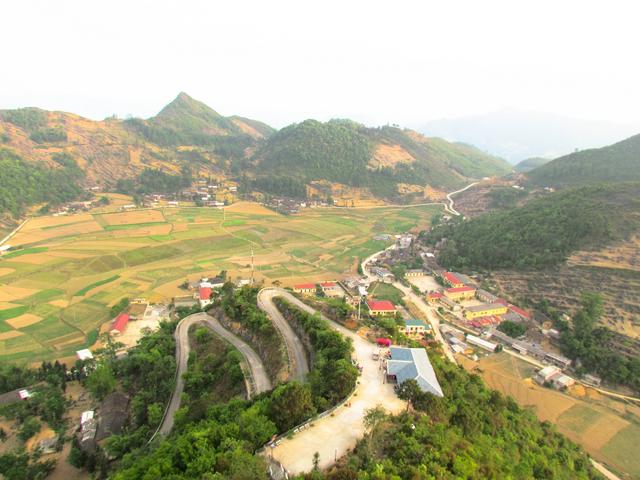
- Phố Cổ Coffee (Old Quarter Coffee).
- Corn Wine, In the Dong Van local market or any eating place. Corn wine in Hagiang is cooked from the unique material which is planted in the terraced field of Hmong people – corn. Corn is fermented by a special ferment made from the more than 30 different leaves and herbs in the forest. This is traditional fermented method so you will feel the sweet and scent of corn. The corn wine are always be served together with other traditional food such as: Thang Co, Pho, Steamed Rice Flour (Banh Cuon) in daily meals or in special occasions such as meeting friends, weddings or funerals. You can taste corn wine for free and buy in every local market. 50,000 to 60,000 dong/bottle.
Phố Cổ Coffee (Old Quarter Coffee).
Corn Wine, In the Dong Van local market or any eating place. Corn wine in Hagiang is cooked from the unique material which is planted in the terraced field of Hmong people – corn. Corn is fermented by a special ferment made from the more than 30 different leaves and herbs in the forest. This is traditional fermented method so you will feel the sweet and scent of corn. The corn wine are always be served together with other traditional food such as: Thang Co, Pho, Steamed Rice Flour (Banh Cuon) in daily meals or in special occasions such as meeting friends, weddings or funerals. You can taste corn wine for free and buy in every local market. 50,000 to 60,000 dong/bottle.
Meo Vac
